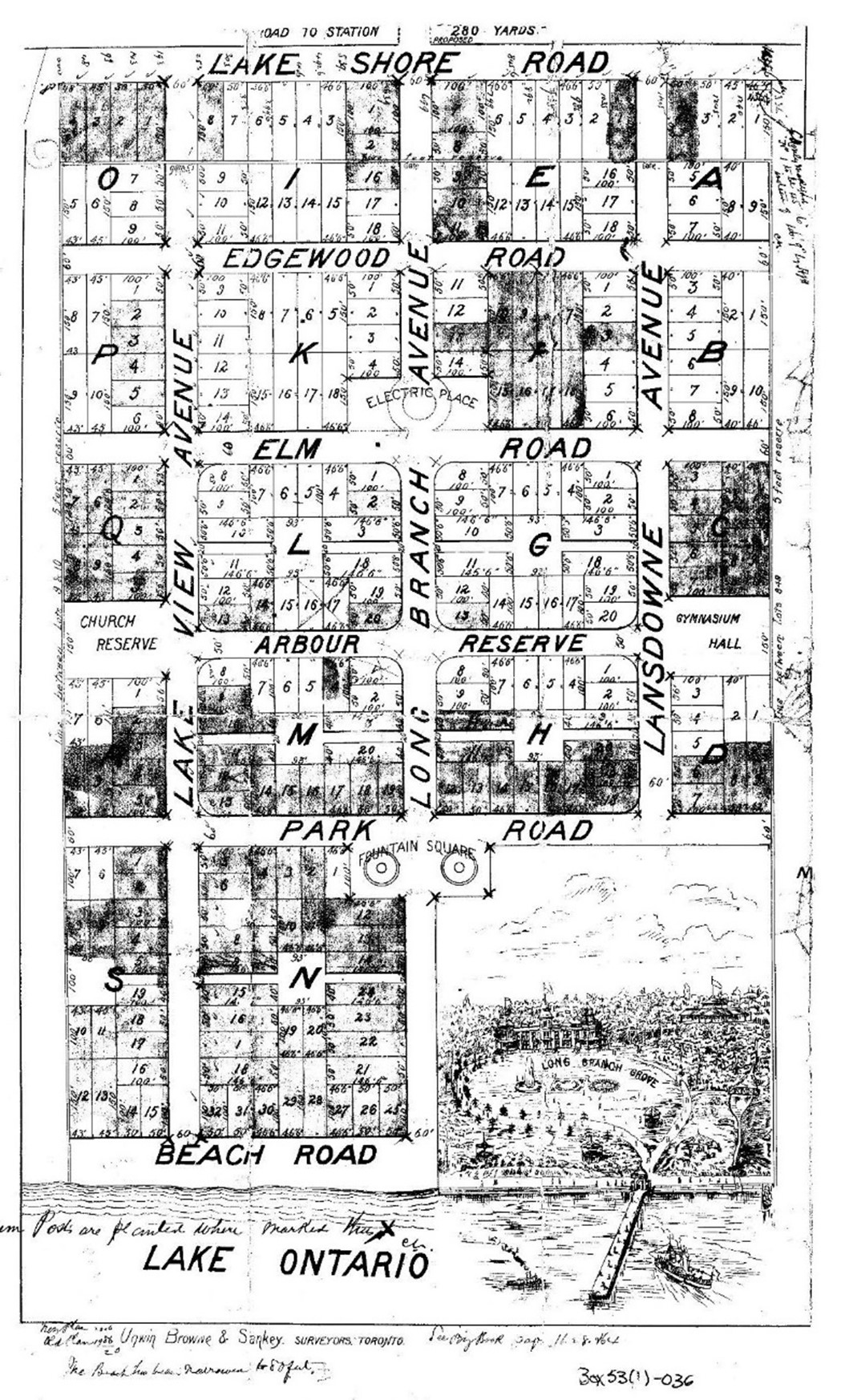Building Long Branch: From Resort Roots to Residential Streets

The Long Branch community is one with a rich history and a past worth exploring. In the Protect Your Boundaries archives, we recently uncovered a 1906 subdivision survey completed by Unwin Brown & Sankey that captures Long Branch in a dramatically different light than the neighbourhood we recognize today.
The VisionThe story of Long Branch begins in 1883 with Thomas Wilkie, a prominent figure in Toronto's land development at the time and a former journalist from New York. He had acquired 64 acres of lakeside forest, which had previously been used as farmland. His inspiration came from the Long Branch resort in New Jersey, where he envisioned a luxurious summer retreat designed to attract Toronto’s elite. That dream began to become a reality with the sale of 250 spacious cottage lots to wealthy families eager to establish a sanctuary away from the city.
More than Lines on a Map
|
 |
Community and Wellness
This survey also gives us some insight into Wilkie’s wholesome vision for the community. The inclusion of shared spaces, such as those for recreation and worship, emphasizes a deliberate effort to create a sense of belonging and togetherness within this resort town.
- Fountain Square became a landscaped courtyard, adding Victorian elegance and serving as a popular gathering spot.
- Gymnasium Hall was built and equipped for exercise and games, aligning with Wilkie’s wellness-forward vision.
- The Church Reserve, where Sunday worship services and Sunday School were held in the open air.
From Resort to Residential
The success of Long Branch was undeniable, as it attracted tens of thousands of visitors looking to escape the city in the summer. At only 45 minutes away on a steamship from Yonge Street, it made for an easy escape. Eventually, this short distance from the city also became a reason for the change in land use. As the city expanded outward, accessibility to the area improved, making the resort area less exclusive. With the extended streetcar service and easy accessibility, many cottage owners decided to winterize their cottages and make them their full-time residences around the 1920s -1930s.
The post-war years brought significant change. With highway development redirecting tourist traffic and the Long Branch Hotel burning down, the resort saw significantly fewer visitors. In an effort to attract more residents and businesses, Long Branch bylaws were passed to allow for multi-family dwellings, and many summer homes fell to make way for more modern developments. In 1967, Long Branch had been fully absorbed into the Borough of Etobicoke and had transitioned from a resort town to a residential neighbourhood.
Legacy in the Landscape
Today, traces of the landscape remain in the street names, the lot lines, and the few surviving cottages. This 1906 survey plan serves as a reminder of the carefully crafted vision that once existed in Long Branch, and it reminds us how landscapes evolve and adapt to the changing needs of society.
Long Branch may no longer serve as a summer retreat, but the memory of its tranquil beginnings is still brought to life by the precise lines of a surveyor’s map.
References:
1.Etobicoke Historical Society. Long Branch. Etobicoke Historical Society, https://www.etobicokehistorical.com/long-branch.html. Accessed 19 June 2025
2."Nostalgia Tripping: Long Branch Village." blogTO, 10 Apr. 2011, https://www.blogto.com/city/2011/04/nostalgia_tripping_long_branch_village/ Accessed 19 June 2025.
3.Long Branch Business Improvement Area. History of Long Branch. Long Branch BIA, https://longbranchbia.com/history-of-long-branch Accessed 19 June 2025.
4.City of Toronto. Etobicoke York Community Council – Long Branch Neighbourhood Character Guidelines – Final Report. 2018, https://www.toronto.ca/legdocs/mmis/2018/mm/bgrd/backgroundfile-118988.pdf Accessed 19 June 2025.












